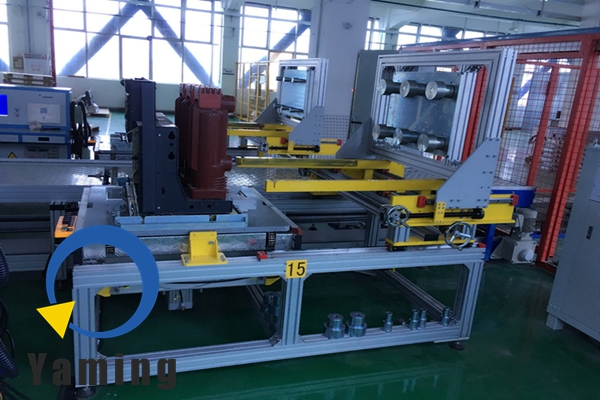A complete circuit breaker assembly line consists of multiple systems operating in conjunction, each system performing its own duties to ensure a smooth production process:
1. Parts conveying system: As the “transportation center” of the production line, precision belt conveying lines and index disc conveying mechanisms are often used to accurately convey circuit breaker casings, trippers, contacts and other parts to each station according to the production rhythm. For example, in the production of small circuit breakers, the conveying system can transfer parts at a speed of 15-20 pieces per minute, and the positioning error is controlled within ±0.5mm to ensure subsequent assembly accuracy.
2. Automated assembly system: This is the “core execution unit” of the transmission line. It takes the multi-axis robot and servo assembly module as the core to complete automatic grabbing, aligning, pressing and other operations of circuit breaker parts. For example, in the assembly process of the trip, the robot can accurately embed the coil, iron core and other components into the housing, and the error in the pressing force does not exceed 5N, which improves the efficiency by 4-6 times compared with manual assembly, and avoids component damage caused by manual operation.
3. Performance testing system: It is equivalent to the “quality gatekeeper” of the transmission line, integrating modules such as conduction test, overload trip test, and insulation resistance test. Each assembled circuit breaker will automatically enter the testing station. For example, the insulation resistance needs to be ≥100MΩ and the overload trip time needs to be within the specified range. Unqualified products will be automatically sorted and eliminated, and the test pass rate can reach more than 99.8%.
4. Data traceability and management system: As the “smart brain” of the production line, based on industrial Internet technology, it collects production data (such as production time, operators, and testing parameters) of each circuit breaker in real time and generates a unique traceability code. Enterprises can use traceability codes to query the full life cycle information of a single product, which not only facilitates traceability of quality problems, but also optimizes production parameters through data analysis, such as adjusting the assembly speed of a certain workstation to improve the efficiency of the overall production line.
